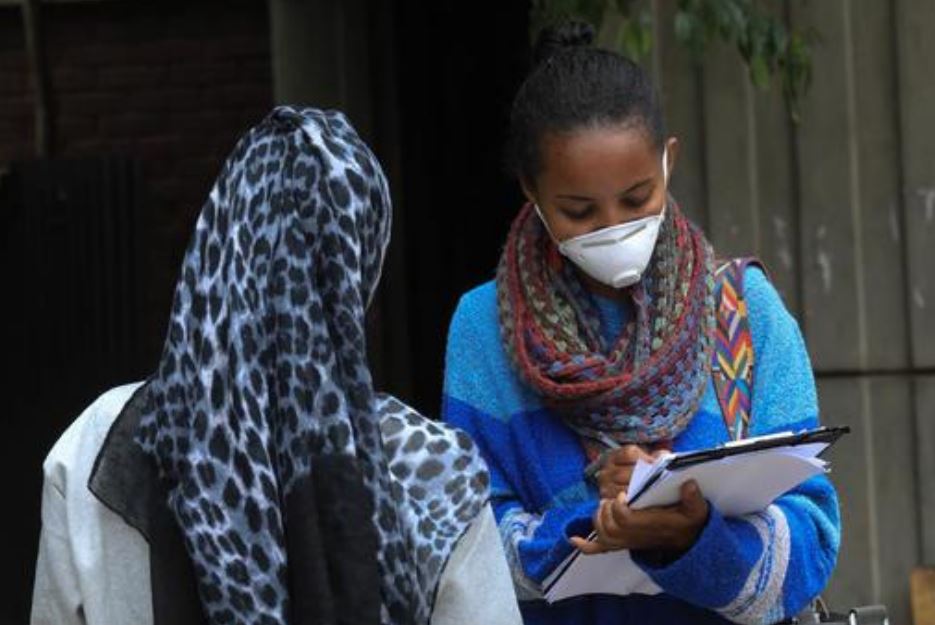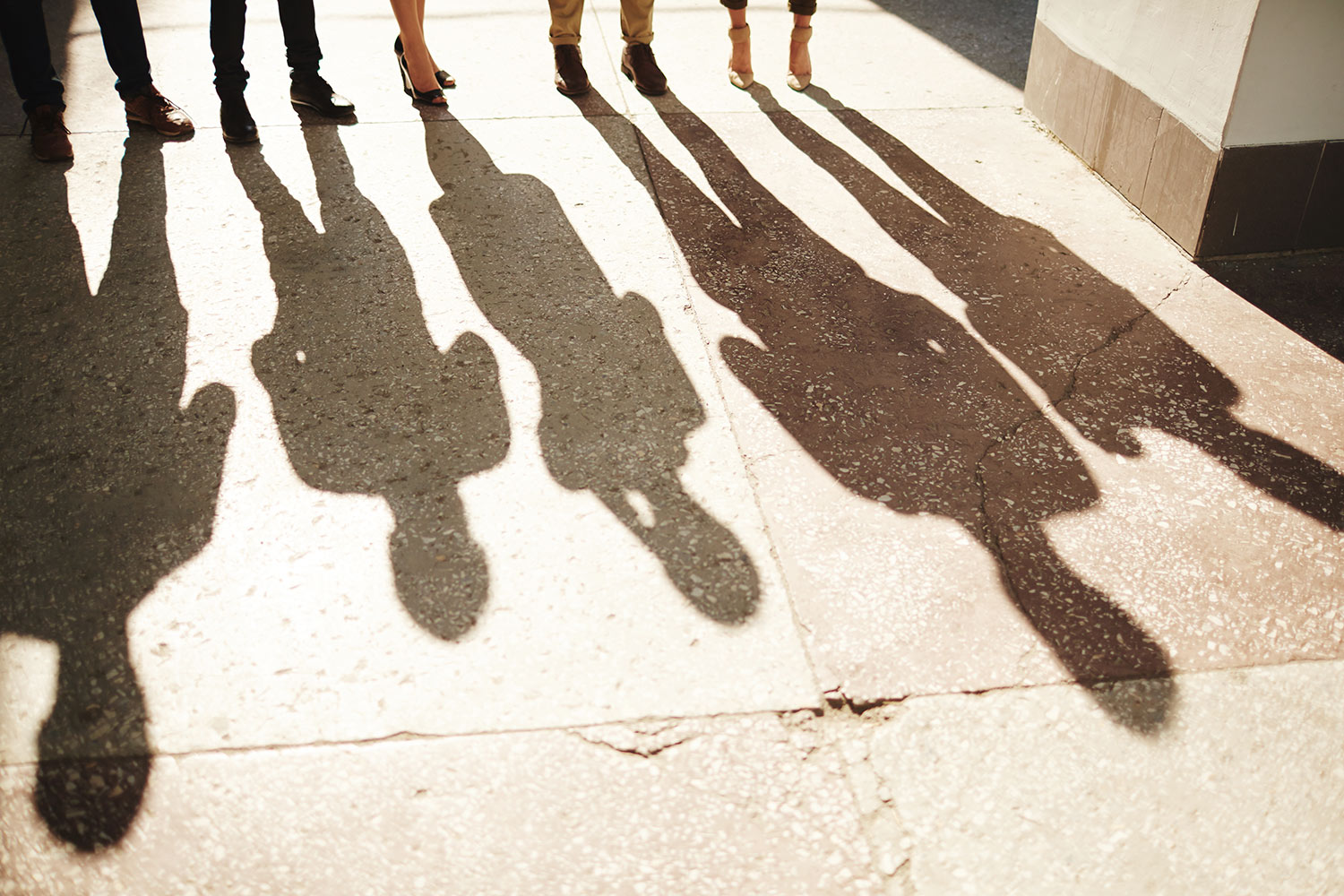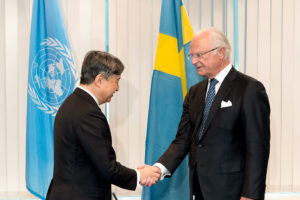heading
PROJECT: UNDP-SIWI WATER GOVERNANCE FACILITYGender
Gender equality is key for sustainable, effective, and inclusive water governance. It means that everyone must have the same opportunities to access, manage and use water services and resources. Women and men, girls and boys, as well as gender minorities must have equal ability to influence how decisions are made and must benefit equally from water and development programmes.

Goals
Gender equality refers to the equal rights, responsibilities and opportunities of men and women, boys and girls, including equal access to, control over and use of services and resources. WGF recognizes that while gender equality is truly about equality among women, men and sexual and gender minorities, more evidence is available to support the inequalities faced by women. The focus on the inequalities faced by women is therefore treated as an entry point to the broader set of issues.
WGF works towards increased gender equality, applying both targeted and mainstreamed strategies. As always, we aim to integrate applied research with our policy and technical support.
- Raise awareness on the importance and benefits of gender equal participation in all levels of decision-making, planning, and monitoring.
- Provide practical advice on how to apply gender equal policies in projects and programmes.
- Promote values and practices of gender equality through research, knowledge production and global advocacy.
- Support capacity building in gender-responsive programming and decision-making.
Gender equality matters
Gender relations are constructed by a range of institutions – domestic, political, and legal systems, religious authorities and the market. What they have in common is that they tend to disadvantage women. When gender expectations intersect with for example poverty, ethnicity, origin, age, disability and sexual orientation, the result is complex and multi-layered, creating barriers to dignified, equal and safe lives for all women and girls. These barriers determine who has access to and control over services, goods and resources – and who benefits from their use.
In the water sector, we often see decision-making and implementation being dominated by men. This results in management decisions that are likely to be unsustainable since they will be missing key input from at least half the population. Experience tells us that water projects gain efficiency and sustainability when both women and men are involved in decision-making, supervision, and provision of water. Women and gender minorities have differentiated knowledge that is vital to sustainable resource management, as well as differing perspectives on responsibilities, priorities, and needs around water use and management.
WGF offers technical expertise to develop activities and programmes to address inequality in governance and ensure that women, men, gender minorities, girls and boys equally benefit from development programming.
Our approach
WGF strives to create programmes and opportunities to empower, strengthen and lift the voices of those who are often left out of decision-making and help to highlight the important roles and contributions that various stakeholders can provide.
Our approach focuses on targeted activities as well as mainstreaming gender equality into all our work – meaning that everything we do should deliver on more gender equal outcomes. We also take particular effort to ensure that women are recognized as important, knowledgeable and equal stakeholders.
Examples of our work include:
- Gender sensitivity trainings are an extremely useful tool for helping women, men and children to understand and address gender-based biases and barriers. WGF has designed and delivered several tailored trainings on gender, including a training-of-trainers session on gender, water and sanitation in Tajikistan.
- The gender gap is particularly evident in the area of transboundary water management. To respond to this, WGF, through the Shared Waters Partnership programme, is actively working to strengthen female leadership in the Nile Basin and has launched a Women and Water Diplomacy Network to connect women across borders and provide capacity development in relevant areas.
- A ground breaking WGF report highlights the different ways in which women and men face corruption in the water sector and has notably brought to light incidences of sexual exploitation or sextortions faced by many women when accessing water services or even trying to participate in water related employment. Through this, WGF was able to raise the profile and break the taboo around sextortion in the water sector and channel much needed resources towards this issue.
- The lack of effective implementation of methods and strategies to ensure women’s equal participation in water and sanitation projects remains a barrier to sustainable water management. WGF has developed key guidance on which steps and interventions are essential to ensure women have meaningful and secure role in project planning, implementation and reporting – notably highlighting the need for commitment from programme leadership, alignment with women’s organizations and sensitization of boys and men to gender issues.
- WGF supported women in the community of Las Lolas, Ecuador, to organize themselves and run the community water system. Through capacity building activities, these women are leading the way towards breaking traditional gender roles while also providing essential services to their community.
- Compounding women’s absence from important water sector activities is the lack of gender disaggregated data illustrating the differences in how women, men and gender minorities are interacting and benefitting from water services. To better support the collection of gender disaggregated data across the water sector, WGF provided technical input to the design of gender responsive water governance indicators as part of the UNESCO WWAP Gender and Water Toolkit.
The challenge
Women and girls bear the primary responsibility for water collection in 80% of households without in-home water access (UN Women 2018) and collectively spend more than 200 million hours every day collecting water (UNICEF, 2017).
This is time that could and should be spent on education and earning an income. In Tanzania, a one-hour reduction in water collection time has been found to directly correlate to a 19% increase in school enrolment for girls (Sommer et al., 2015). Inadequate access to sanitation and hygiene facilities at or near home, school or work puts women and girls at risk of illness, violence and harassment.
As nearly half of the global agricultural and food production workforce (FAO, 2012) women’s ability to control water resources puts global and local food supplies at tremendous risk (World Water Assessment Programme, 2012). It is for these immense societal gains, as well as the decades of experience, that touts the sustainability benefits of including women’s needs in planning that dedicated efforts must be made to engage and consult women in every role at every level.
As the primary managers and users of water in the home, women provide valuable insights to availability, quality, and management of water during the day when many men are engaged outside the home. As service providers and water management authorities, women can help ensure that priorities of women and children are actually captured in daily service delivery, and that changes in service provision and resource access do not negatively affect women and children in the communities they serve (World Bank, 2019). Women as policy makers and regulators they can actively promote and support policy (and its enforcement) that includes issues relevant to women in the community.
Gender and Water
To improve water governance, we need to take a close look at gender roles. While women and girls shoulder the main responsibility for collecting water, men are more likely to be making water decisions. This needs to change.
Know more about gender & water





